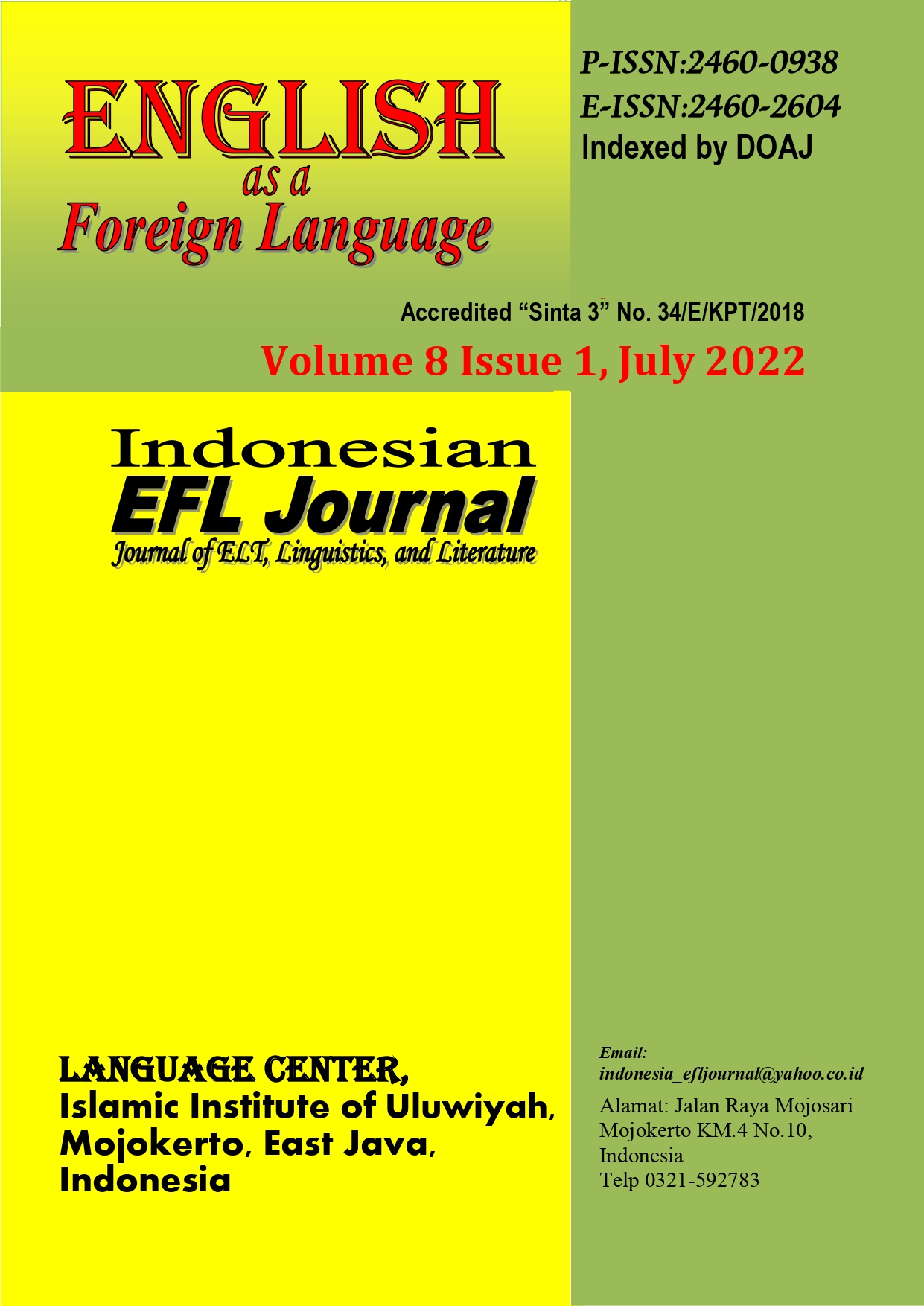The Representation of Masculinity through Peter Parker as the Main Character in Spider-Man No Way Home Movie
Abstract
This research aims at analyzing the personal characteristics of Peter Parker character in Spider-Man No Way Home movie using Masculinity theory. This research focuses on explaining and analyzing the masculinity characteristics and its type founded in Peter Parker as the main character in this movie. This research used a descriptive qualitative method. Procedure of collecting and analyzing the data in this research are preparing the data, selecting the data, watching the movie to obtain the data.While in analyzing the data, the researchers employ some steps as follows: analyzing the data, identifying the data, coding the data, describing the data and making the report. This research finds the Masculinity characteristics in the main character based on Janet Saltzman Chafetz’s theory. Based on the references used in this study, Peter Parker has all the characteristics of masculinity: physical, function of the man, sexual aggressive, emotion, intellectual, interpersonal and other personal characteristics. Based on the film and the references it shows that Peter Parker has a hegemony type of masculinity.
References
Brannon, L. 2017. “Psychological Perspectives.†7.
Chafetz, J. S. 1978. Masculine, Feminine or Human? : An Overview of the Sociology of the Gender Roles. Peacock Publishers.
Chafetz, J. S. 1978. Masculine, Feminine or Human? : An Overview of the Sociology of the Gender Roles. Peacock Publishers.
Chafetz, J. S. 2006. “Sociology of Gender.†University of Houston.
Connel, R. W. 2005. “Masculinities.†University of California Press 2.
Courtenay, W. H. 2000. “Constructions of Masculinity and Their Influence on Men’s Well-Being: A Theory of Gender and Health.†Social Science & Medicine 50(10):1385–1401.
Hornby, A. S. 2006. “Oxford Advanced Learner’s Dictionary of Current English.†Oxford University Press.
Merdeka, P., and K. A. Kumoro. 2018. “Masculinity : Male Traits in 1930s Portrayed in Public Enemies. Insaniyat: Journal of Islam and Humanities.†2:109–129.
Messerschmidt, James W. 2019. “The Salience of ‘Hegemonic Masculinity.’†Men and Masculinities 22(1):85–91. doi: 10.1177/1097184X18805555.
Reeser, W. 2010. “Introduction: The Study of Masculinity.†Masculinities in Theory 1–16.
Saputro, Dio H., and Harti Yuwarti. 2016. “Representasi Maskulinitas Pria Di Media Online.†Wacana xv(1):1–85.
Prastyo, Hari (2008) The correlation between discourse quality and readability of the english reading texts used in the State Islamic Senior High Schools (MAN) Jombang. Undergraduate thesis, Universitas Islam Negeri Maulana Malik Ibrahim.
Reeser, W. 2010. “Introduction: The Study of Masculinity.†Masculinities in Theory 1–16.
Saputro, Dio H., and Harti Yuwarti. 2016. “RepresentasiMaskulinitasPria Di Media Online.†Wacanaxv(1):1–85.
Copyright (c) 2022 Indonesian EFL Journal: Journal of ELT, Linguistics, and Literature

This work is licensed under a Creative Commons Attribution-ShareAlike 4.0 International License.
All rights reserved.
this publication may be reproduced, stored in a retrieval system, or transmitted
in any form or by any means, electronic, mechanical, photocopying, recording.




